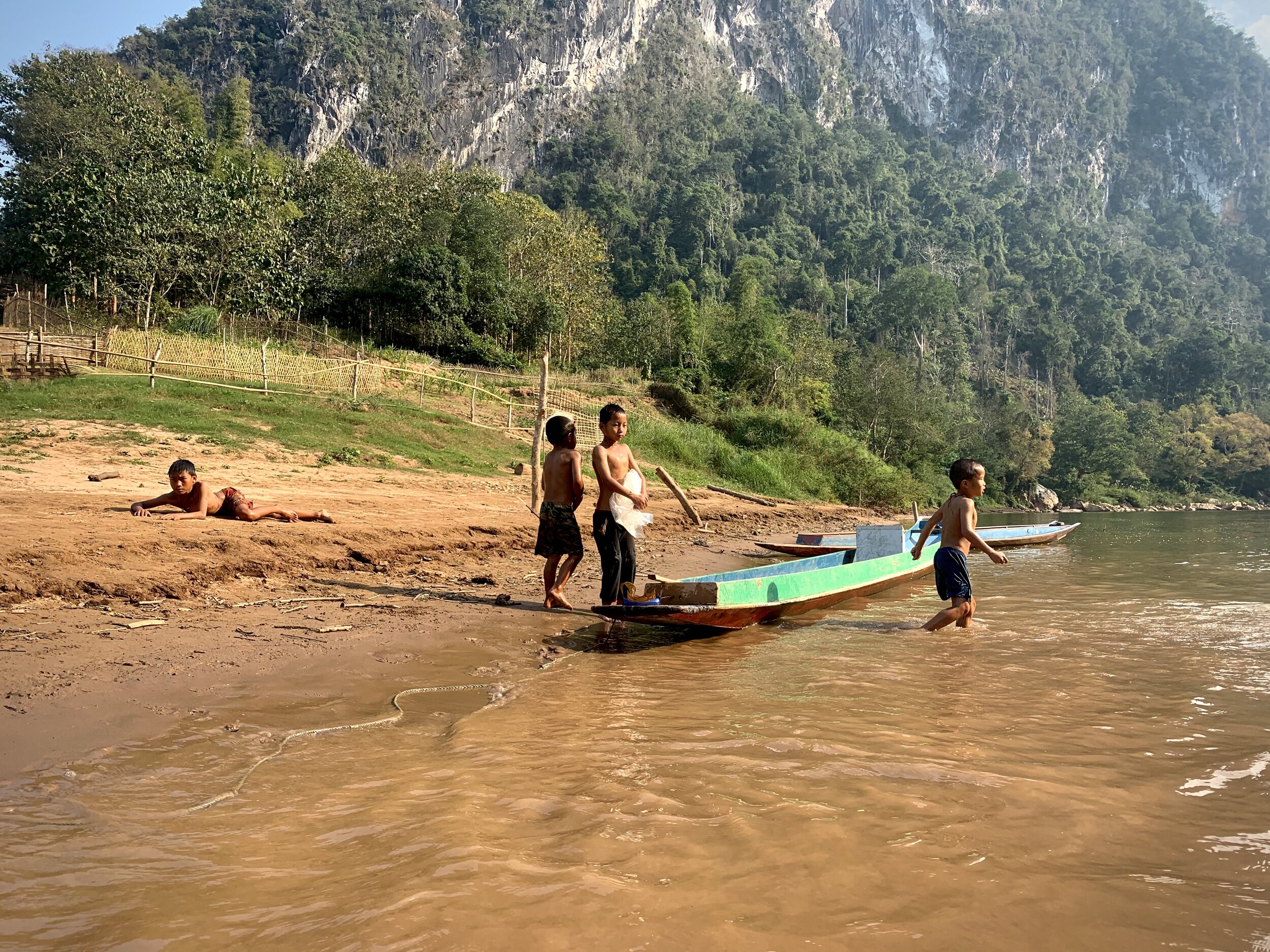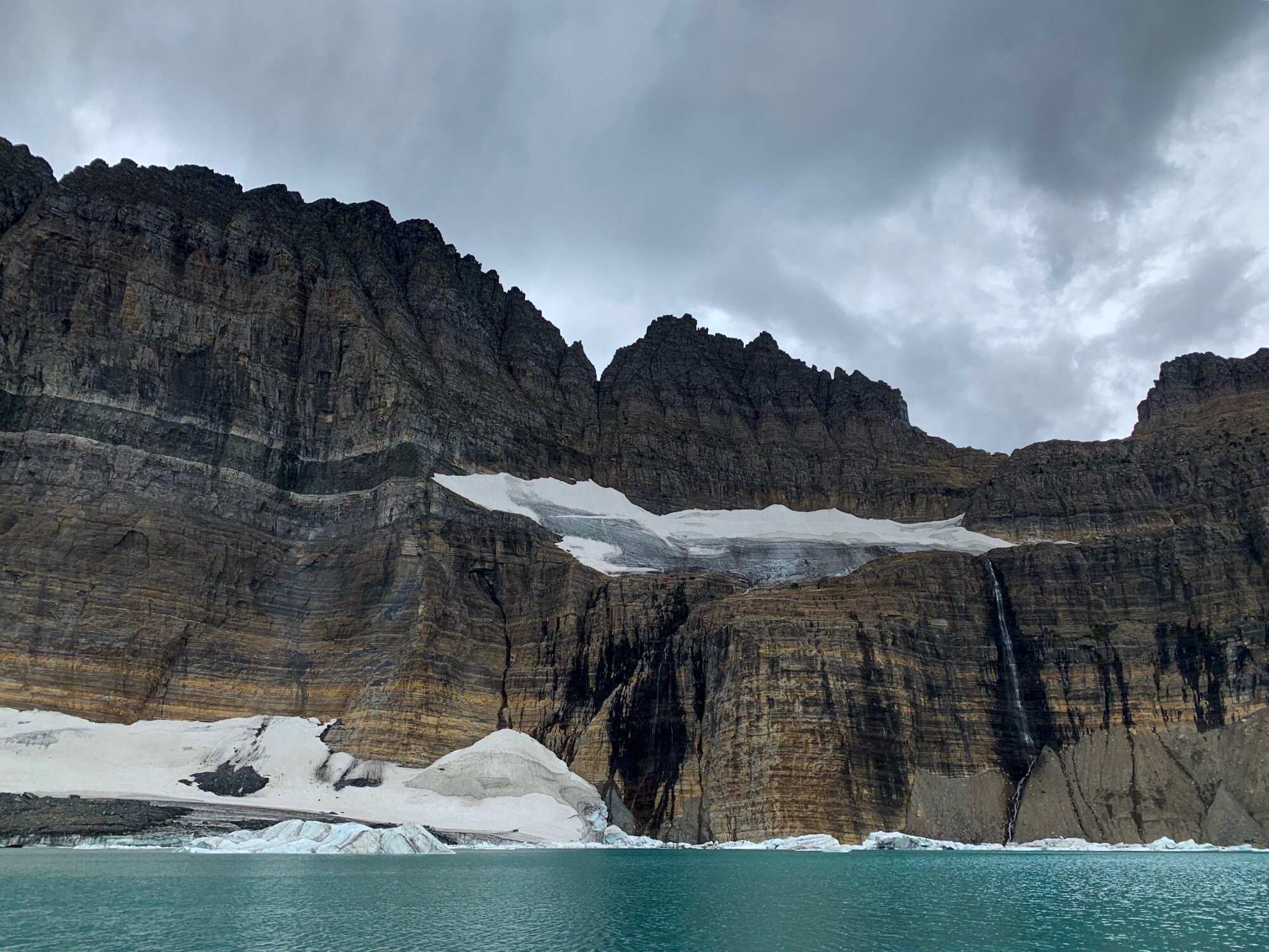Finding Home in Ban Sop Chem
“I was never not coming here. This was never not going to happen.” -Eat Pray Love
From the moment I landed in Laos, surrounded by mountains and green, something in my soul felt like it had slipped perfectly into place. Back before I started traveling, I spent a lot of time struggling with the meaning of my life and what I was doing. I didn’t think that what I was currently doing had the power to make the impact I wanted it to. So, I went searching, and I found myself in Laos, a country I’d never heard of before signing up to go.
Both times on the boats, when we were arriving in and leaving Sop Chem, I cried. I expected to upon leaving—I hate goodbyes, I always try to frame them as a “see you later,” and this time around I really hoped it was true because the moment we arrived, no, before we arrived, when we were simply traveling down the Nam Ou River with mountains as tall as Montana’s glaciers casting shadows on the water and our boat and the trees, I suddenly felt a whisper of “oh, this is why.”
View from the restaurant in Sop Chem
Why I came here, why I didn’t feel like what I was working on before had much purpose, why I was put on this planet. I was supposed to do something bigger. I arrived as a volunteer, and I left knowing I needed to come back.
I spent the week with the locals, getting to know them by name and spending more time with them than I would ever spend with my neighbors back in California. We were able to connect without language. I played games with children who just wanted to learn from us, I made emotional connections with the village’s women, I tried their food, and stayed in their homes. I pet their dogs, and ate lunch with views of their river, a river that would always symbolize the act of arriving here.
Working with the children was one of the most fulfilling moments for me. I arrived in Southeast Asia expecting to put most of my energy into permaculture—it was sustainability that brought me out there in the first place. But the truth is, the connections with the people is what made me want to stay. In Laos, I worked with the young boys to teach them English. I picked them because I have a little brother, and I knew most people would want to work with the girls anyway, and the boys deserved that attention and love too. I knew they’d be a handful, but sometimes mischief is fun, and it turns out, my favorite students were the troublemakers.
Some of my students, playing in the river
Of course, I loved all of them, and I’m incredibly proud of the progress they made just in the time I was with them, but the ones whose names I’ll forever remember are Khan and Leek, to the older boys (about 8 or 9) who came to the intermediate class to learn English on their last 3 days of winter break. They were mischievous, but that meant they were smart. They didn’t have to be there—they showed up because they wanted to. They came and went as they pleased, but still enjoyed a good coloring book and sticker at the end of the day. Khan can give a high five that will knock your soul straight out of your body. Leek is soft at heart, I can tell, but he likes showing off—being the center of attention.
At the end of the school day, the boys disappeared, like children of the jungle and the mountains, dispersing into the hiking trails and roads and trees, while the girls stick around to play games. Phun is the girl who always picked me as her partner for games, and later in the week, for dancing. She’s about 7 years old and she was never my student. She just learned my name when her friend Noona asked. I wanted to ask her why she always picked me, but she doesn’t know enough English and I don’t know enough Lao and “why” is a hard question to answer in any language, so I’ll just go with the idea that she either liked my energy or my pants. I hope that one day I can ask her, but the truth is, even when I do eventually find my way back there, the odds are, she probably won’t remember me the way Noona would, who remembers every volunteer from the past three years. They’re best friends, those girls, and I wish I could have given them so much more.
After the Baci Ceremony
I sat, on one of my last days in Sop Chem, hanging in my hammock in the restaurant where we always ate our meals, looking out over the Nam Ou River for one of the last times until next time (whenever that may be). My legs were bug bitten and bruised and my Teva tan was back and my soul felt so at peace there that the thought of leaving and never coming back broke my heart. I’d never wanted to stay somewhere longer than I wanted to stay there. I didn’t feel like I was on the other side of the planet from home. It felt like my soul had always been trying to find this place.
My last morning in Sop Chem also happened to be my birthday. The last night of my year had been spent dancing to an hour long remix of songs from my childhood under the stars, barefoot, in the center of a village in the center of mountains with Baci chords tied around my wrists for good luck. I felt so full, that day, even knowing that the morning meant leaving, and as we did, back on the boats that brought us to our new home in Ban Sop Chem in the first place, it didn’t feel like the people on the shore of the river were saying goodbye, not forever, at least, not for me.


























